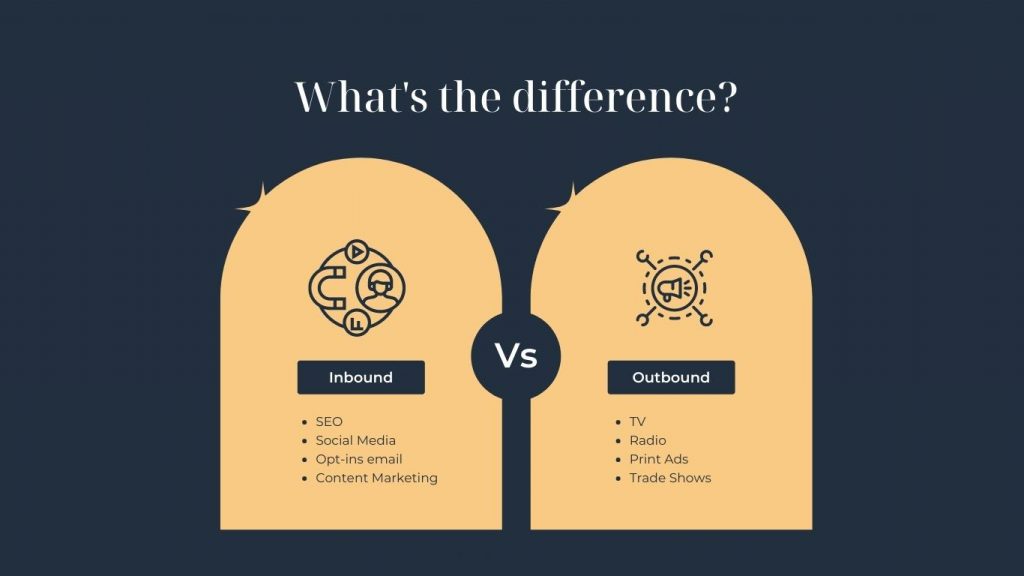What Is Inbound Marketing?

Inbound marketing is a customer-centric approach to marketing that draws in potential customers and earns their business. Inbound marketing strategies use online tactics to attract visitors who are already interested in your brand or products, rather than spending time, energy and money on outbound efforts to attract new visitors and customers through advertising.
Content marketing, search engine optimization (SEO) and social media marketing. Inbound marketing campaigns use a combination of these types of marketing channels to attract people’s attention and help increase their overall reach. The aim is to make use of ‘earned’ and ‘owned’ media to drive quality traffic, engagement and conversions.
The phrase ‘inbound marketing’ was coined back in 2006 by HubSpot, who defines it as the process of attracting, converting, closing and delighting customers. The truth is that most businesses already practice forms of inbound marketing, even if they aren’t aware of it.
With its focus on creating a web presence that generates leads and converts prospects into paying customers, inbound marketing is best described as ‘a new approach to business growth.’ When implemented correctly, inbound marketing can drive more interest from high-quality leads and increase sales.
What Are The Difference Between Inbound Marketing & Outbound Marketing?
When it comes to digital marketing, inbound and outbound marketing may seem like two faces of one coin. In reality, they are worlds apart. One is based on audience insight, while the other relies on brute force and push tactics.Inbound marketing means producing content that’s valuable and interesting to your prospective customer, with the hope that through sharing this content, it will find its way in front of your target audience. You can start a blog, maintain a Facebook page and Twitter profile, create YouTube videos, produce an e-newsletter…the list of avenues is endless.

Inbound Marketing: Owned and Earned Media
Inbound marketing makes creative use of owned and earned media to engage potential customers.
Owned Media: Some call it owned media, others call it house media, but regardless of the terminology it refers to the channels that a business controls like their website, blog, social media profiles, product landing pages and email newsletters. These are channels you choose what to publish, how to publish it and when.
Earned media is the mechanism by which your audience becomes aware of your business. You don’t control the message or promotion in this scenario, but you can use those channels to endorse and support your owned media. For example, a customer writes an ebook and features your product as one they have used with success. Then they write an article to go along with it and include a link back to your site. This is a form of earned media.
Outbound Marketing: Paid Media
Outbound marketing, on the other hand, is more commonly connected with paid media. This could include traditional offline advertising, pay-per-click (PPC) and display advertising, as well as paid emails.
Paid media also includes social media advertising, such as Facebook ads and boosted Twitter postings.
When we talk about promoting content, many of us will automatically think about using social media such as Facebook and Twitter. But why limit yourself to just these channels? Outbound marketing is also a great opportunity to share your content with your target audience and help boost the performance of your inbound marketing campaigns.
Advantages of Inbound Marketing
To produce great traffic, target the right audience in the right place.
Inbound marketing is the process of attracting the right audiences in the right places with relevant and useful information using search engine optimization, social media marketing and content management. When the right audiences (pre-qualified customers) come to your website through quality channels you are creating a competitive advantage over your non-targeted competitors.
Increase trust
Inbound marketing, in many ways, is about a brand acting as a resource for their customers. Instead of sticking to the traditional methods of trying to push sales at every opportunity, it’s about using the right information to give your potential customers the information they are looking for. By doing this in a creative and engaging way, you hope they’ll come to you when they are ready to buy.
Avoid becoming overly reliant on a single channel.
If you rely on Google for all of your traffic, you’re exposed to all the pitfalls of a too-heavy reliance on one channel. Other platforms may change their algorithms or even profit-motives from day to day. Google doesn’t undergo much change on that front, but they have been known to make dramatic changes (especially when it’s over a period of increasing frustration with sites that manipulate the system).
Things To Consider
Measurement
Measuring the impact of inbound marketing in a way that shows a clear return on investment has always been difficult. The trick is to be explicit right from the start.
It’s possible that you won’t be able to quantify the number of leads created as a direct result of your campaign, but you can track how many people downloaded your resource, how long they watched it on average, how many new social media followers you got, and so on.
Be clear about what you’re attempting to achieve when you’re organizing your campaign, and measure it correctly and honestly. Everyone’s expectations will be set in this manner, and they will be more likely to be satisfied.
Long-term strategy
It shouldn’t come as much of a surprise to you that your inbound marketing strategy takes time to put together, implement and refine before you see the kind of results you want. After all, an effective campaign needs people, planning and investment. If you want results that continue to deliver value long into the future, though, don’t be afraid to invest in an evergreen campaign that might need a little more effort at the outset but can provide completely self-serviceable results for years down the line.
Examples of Inbound marketing
-Content hubs offering how-to video guides, blogs, case studies, webinars, white papers and related product information
-User-generated content and social media marketing campaigns, such as photography competitions or review collation
-Interactive online content pieces created in partnership with related businesses to increase digital PR and promotional opportunities
-Creating quality content for your target audience via blogging on your company website
Inbound marketing can be a jungle. You need to do proper analysis and refine your approach. Otherwise, you’re unlikely to see great results. The first step is to have a well-designed system to track performance, analyse data and make informed decisions based on what you learn. This is important, whether you’re completing your first few inbound marketing initiatives or are already seeing some success with your efforts.
